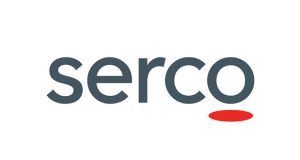From CAFM to AI, how can FMs determine which digital solutions are the right ones for their needs? We asked the experts for their views
CAFM (Computer Aided Facility Management) has long been the foremost software solution used by FMs, allowing them to access asset data and information on the built environment as well as delivering mobile solutions for operatives in the field. Now a range of next generation FM-related software solutions have entered the field, designed to complement and ideally enhance CAFM performance.
Let’s begin with useful overview of the relationship between CAFM software and other digital tools. According to Paul McCarthy, CTO of Service Works Global, CAFM provides the solid foundation where FMs can manage and maintain their estate.
“When integrated with CAFM software, smart building and IoT (Internet of Things) technology can drive significant operational improvements as it offers the ability to capture real-time data, allowing users to gather insights on building usage, asset performance and energy consumption. This can then be fed into CAFM software to drive efficiencies and influence maintenance strategies.”
He continues: “AI adds a further layer of intelligence, allowing systems to take existing data patterns and trends to determine when input is needed from FM. The variables are infinite; from predicting equipment faults and scheduling preventative maintenance to avoid asset failure to identifying potential security risks.”
So how do you choose which is right for individual needs? James Massey, Managing Director, Facilities Management, Energy and Retail Intelligence at MRI recommends you begin with your end goal.
He explains: “Consider what reports and data driven decisions you are going to make with this data and take into account what the various stakeholders will want to understand from that data set.
“Once that is mapped out, critical to success is a good collection platform, be that either as a one-off survey or an ongoing process, this could take various forms including a mobile app, IoT sensors, historic data ingest etc. all should be considered as options.”
John Gorman, Marketing Manager, Anders+Kern adds: “A word of warning, you need to speak to people that want to solve your issues not sell you technology. You can spot this straight away when speaking to different digital service providers, as they will start presenting their technology, not asking you what the issue is.”
Meanwhile, Craig Allan, UK Commercial Director, ABAX thinks it is important to remember to look beyond the physical building side of FM. “An often, over-looked area are the mobile assets that fall under control of FMs. Here there are many new innovations that, depending upon the required outcomes, can easily assist FMs to achieve their goals.”
DIGITAL ASSISTANCE
The way organisations are managed has changed dramatically since the pandemic and software solutions are required that help FMs manage buildings and people working within the new hybrid working model.
McCarthy of SWG believes it is here that digital software can help organisations monitor their space to reflect hybrid working patterns and utilise it to encourage staff back into the office. If downsizing space, the adoption of flexible hot desking and the subsequent restructuring of an office can be difficult to manage without space management software.
“This software can provide scenario planning features to help with this, making sure every inch of the office is optimised,” he says. “Furthermore, IoT and sensor technology can also be implemented so FMs can understand how a space is used. Data on how often desks or meeting rooms are occupied can add valuable insight into how to arrange an office space.
“For organisations trying to encourage people back to the office, the focus on facilities has never been more important. Making sure workspaces are optimised for employee needs, creating more collaborative spaces, and making sure assets are running as they should will help to incentivise people out of their home office and back into the corporate one.
“Implementing workplace software can make it easy for staff to plan their in-office days. If a hybrid working policy such as hot desking is introduced, staff need to feel confident that when they turn up at work, they’ll have access to everything they need.”
Massey describes how digital tech can help facilitate “hotel style amenities” where everything from the air conditioning to the availability of meeting room refreshments are in place and crucially can also help FMs reduce wasted resources such as heating/cooling in empty spaces.
 “People want to come in to work, not to come in and work around the facility” he explains. “Proactive space management is also critical, as there is little value in having a six-storey building with six people in it and one on each floor.
“People want to come in to work, not to come in and work around the facility” he explains. “Proactive space management is also critical, as there is little value in having a six-storey building with six people in it and one on each floor.
“Technology can help to flag these kinds of points and change the FM role into one of ‘proactive’ as opposed to ‘reactive’, encourage people to collaborate on those quiet days, and doesn’t let them sit in isolation.”
Measuring occupancy levels is another essential part of the digital mix, which is why Gorman would always advise installing the sensor technology first, as this provides a good foundation for the data utilisation.
He says: “Utilisation data helps to provide confidence that you have enough space to support hybrid working, but most importantly it gives you the data and insight to have conversations with the businesses you support. With this you can demonstrate their average utilisation of the space they currently use and the maximums they have reached.”
Paul Witter, Head of Finance, Commercial & Partnerships at BigChange argues there are other benefits of using data to unlock efficiencies and help save time, money and resources, particular by switching from paper to digital based records.
“Automation – such as computer-generated service renewal reminders, booking confirmations and job despatch, reduce the administration burden. Information is also more accurate and instantly updated and some issues can be resolved much quicker and resources optimised more effectively. Meanwhile field operatives are freed from filling out paper job cards, timesheets and other forms.”
BIM (Building Information Modelling) data models shouldn’t be overlooked either says SWG’s McCarthy as it gives contractors and operatives the ability to view a space beforehand, enabling them to access any areas where maintenance is required and familiarise themselves with a building layout without the need for multiple expensive site visits.
He says: “If needed, 3D viewing tools can be used to ‘see’ assets that may normally be hidden from view such as in ceiling voids. BIM technology means simple things such as knowing the make and models of certain equipment in advance and ensuring the right tools are taken to the site prevents the possibility of multiple unnecessary visits and streamlining the task at hand. This helps prevent a backlog and can ensure a building is performing at optimal levels.
“IoT data can also help drive energy efficiencies – making sure energy is only used in spaces that are being used and introducing elements such as temperature control to make sure a space is not overheated.”





